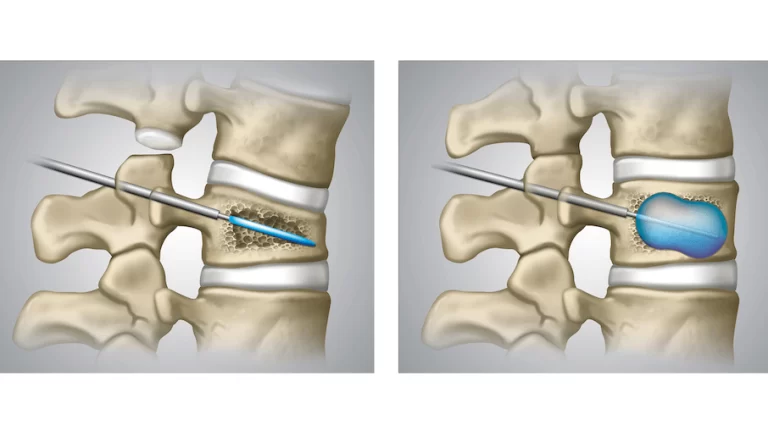- Home
- About Us
- Doctors
- Specialties
- Bariatric Surgery
- Bone Marrow Transplant
- Cancer
- Cardiology
- Cardiovascular And Thoracic Surgery
- Critical Care Medicine
- Dental Surgery
- Dermatology & Cosmetology
- Diabetic Foot Care
- Ear, Nose & Throat
- Endocrinology
- Fetal Medicines
- Gastroenterology
- General Medicine
- General Surgery
- HPB & Gastrointestinal Surgery
- Interventional Radiology
- IVF
- Kidney Transplant
- Laparoscopic Surgery
- Liver Transplant
- Medical And Hemato Oncology
- Neurology
- Neuro & Spine Surgery
- Nephrology And Dialysis
- Nuclear Medicine
- Orthopedic
- Ophthalmology
- Obstetrics And Gynecology
- Pathology Laboratory
- Pediatric
- Peripheral Vascular And Endovascular Surgery
- Physiotherapy and Rehabilitation
- Plastic Reconstruction
- Plastic & Cosmetic Surgery
- Pulmonary Medicine
- Radiation Oncology
- Radiology
- Robotic Surgery
- Surgical Oncology
- Urology
- Facilities
- Patient Area
- Testimonials
- Media
- Contact Us
Kyphoplasty
Restoring Spinal Stability and Alleviating Vertebral Compression Fractures
Welcome to our comprehensive guide on kyphoplasty, a minimally invasive procedure designed to address vertebral compression fractures and restore spinal stability. Whether you are a patient seeking information or a healthcare professional exploring treatment options, this webpage aims to provide a clear understanding of kyphoplasty, its purpose, procedure, recovery, and potential benefits.
Understanding Vertebral Compression Fractures
Vertebral compression fractures often result from osteoporosis or trauma, leading to the collapse of one or more vertebrae in the spine. This condition can cause severe pain, reduced mobility, and a decline in overall quality of life. Kyphoplasty is a specialized procedure developed to address these fractures and alleviate associated symptoms.
What is Kyphoplasty?
Kyphoplasty is a minimally invasive surgical procedure designed to stabilize fractured vertebrae and reduce pain. During the procedure, a balloon-like device is inserted into the fractured vertebra and inflated to create a cavity. This cavity is then filled with a special bone cement, effectively restoring the vertebral height and stability.
Indications for Kyphoplasty
Kyphoplasty is commonly recommended for individuals experiencing:
- Severe pain due to vertebral compression fractures
- Loss of vertebral height
- Limited mobility and functionality
- Continued pain despite conservative treatments

The Kyphoplasty Procedure
- Patient Positioning: The patient is typically positioned on their stomach on the operating table.
- Local Anesthesia: The skin and tissues around the targeted area are numbed with a local anesthetic.
- Needle Insertion: A hollow needle is guided through the skin and into the fractured vertebra using fluoroscopic guidance.
- Balloon Insertion: A balloon is inserted through the needle into the fractured vertebra and inflated to create a cavity.
- Cement Injection: Bone cement (usually polymethylmethacrylate) is injected into the cavity to stabilize the fractured vertebra.
- Cement Solidification: The cement solidifies, providing structural support and restoring vertebral height.
- Closure: The needle insertion site is closed with a small bandage.
Benefits of Kyphoplasty
- Pain Relief: Immediate reduction in pain associated with vertebral compression fractures.
- Restoration of Vertebral Height: The procedure can restore height to the collapsed vertebra.
- Stabilization: Reinforces the fractured vertebra, preventing further collapse.
- Improved Function: Enhances mobility and overall spinal function.
Considerations and Potential Risks
- Infection: As with any surgical procedure, there is a risk of infection.
- Cement Leakage: Cement may leak into surrounding tissues, although this is usually well-tolerated.
- Adjacent Fractures: Addressing one fracture may increase stress on adjacent vertebrae.
- Allergic Reactions: Rare allergic reactions to the bone cement.
Recovery and Postoperative Care
- Hospital Stay: Kyphoplasty is often performed as an outpatient procedure, allowing for a quicker return home.
- Activity Modification: Temporary restrictions on certain activities to aid healing.
- Follow-up Imaging: Monitoring the cement distribution and vertebral stability through follow-up imaging studies.


